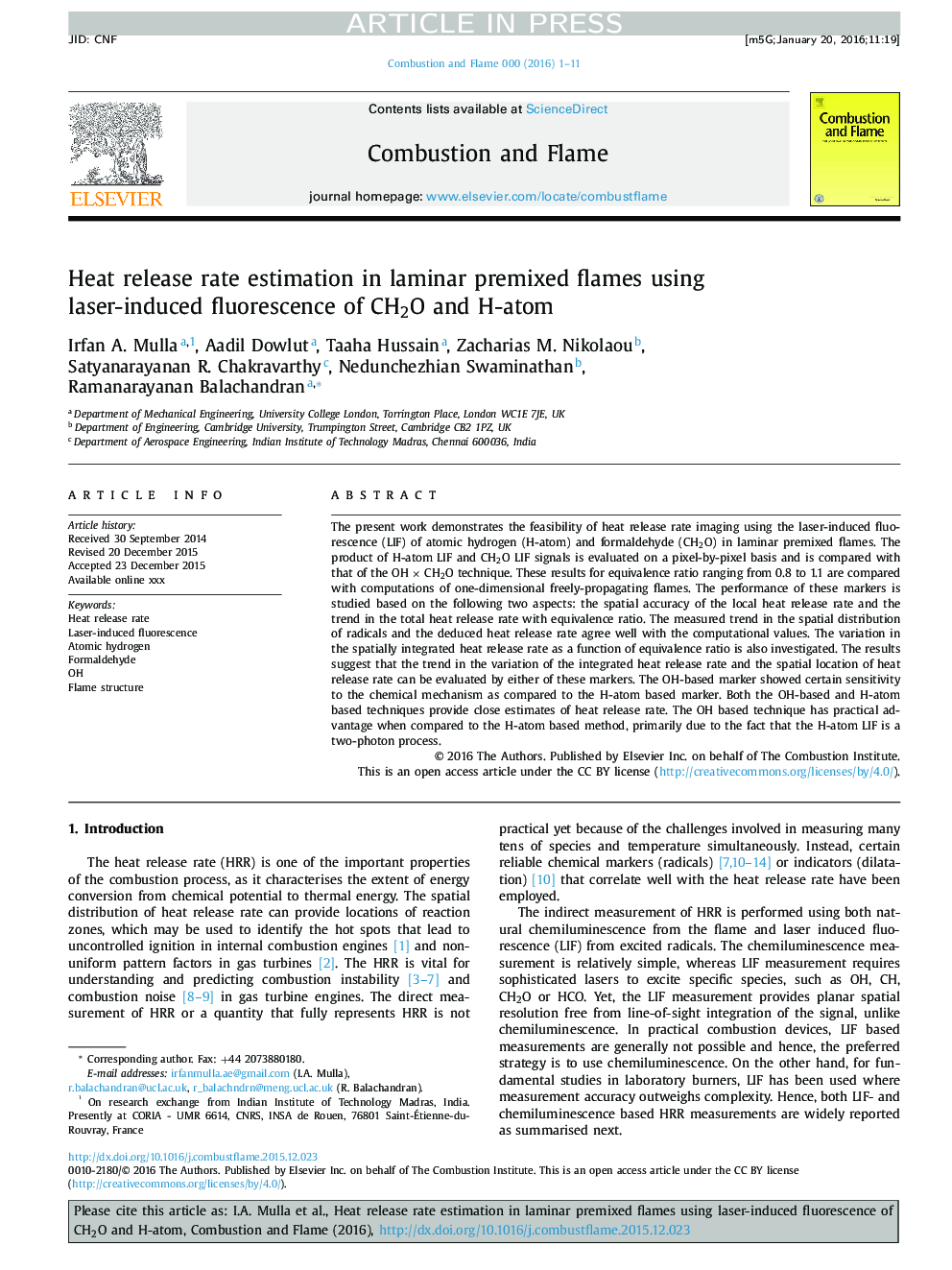| Article ID | Journal | Published Year | Pages | File Type |
|---|---|---|---|---|
| 6594232 | Combustion and Flame | 2016 | 11 Pages |
Abstract
The present work demonstrates the feasibility of heat release rate imaging using the laser-induced fluorescence (LIF) of atomic hydrogen (H-atom) and formaldehyde (CH2O) in laminar premixed flames. The product of H-atom LIF and CH2O LIF signals is evaluated on a pixel-by-pixel basis and is compared with that of the OH Ã CH2O technique. These results for equivalence ratio ranging from 0.8 to 1.1 are compared with computations of one-dimensional freely-propagating flames. The performance of these markers is studied based on the following two aspects: the spatial accuracy of the local heat release rate and the trend in the total heat release rate with equivalence ratio. The measured trend in the spatial distribution of radicals and the deduced heat release rate agree well with the computational values. The variation in the spatially integrated heat release rate as a function of equivalence ratio is also investigated. The results suggest that the trend in the variation of the integrated heat release rate and the spatial location of heat release rate can be evaluated by either of these markers. The OH-based marker showed certain sensitivity to the chemical mechanism as compared to the H-atom based marker. Both the OH-based and H-atom based techniques provide close estimates of heat release rate. The OH based technique has practical advantage when compared to the H-atom based method, primarily due to the fact that the H-atom LIF is a two-photon process.
Related Topics
Physical Sciences and Engineering
Chemical Engineering
Chemical Engineering (General)
Authors
Irfan A. Mulla, Aadil Dowlut, Taaha Hussain, Zacharias M. Nikolaou, Satyanarayanan R. Chakravarthy, Nedunchezhian Swaminathan, Ramanarayanan Balachandran,
